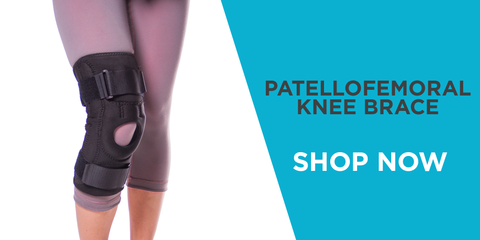6 Exercises and Stretches for Patellofemoral Pain Syndrome (and 3 to Avoid)
“I have pain in the front of my knee whenever I squat or kneel.” “My knee hurts when I sit for too long, use the stairs, or go for a jog."
If these complaints sound all too familiar, you may be one of the many people suffering from patellofemoral pain syndrome. Patellofemoral pain syndrome, also known as runner’s knee or jumper’s knee, is the most common source of knee pain.
Almost anyone can get it, but unsurprisingly, patellofemoral pain is most common among runners, cyclists, and other athletes. On the bright side, you are not doomed to be a couch potato as a result of this diagnosis! In fact, exercising and stretching while dealing with knee pain can actually help treat your patellofemoral pain!
Why Do My Knees Hurt?
The pain at the front of your knee or around your kneecap (patella), associated with patellofemoral pain syndrome, originates where the back of your patella and femur(thigh bone) make contact. (Learn about other causes here). Repetitive contact, usually due to overuse, wears down the protective cartilage covering your kneecap. Friction from the repetitive contact often causes inflammation, swelling, and pain around your kneecap.
The pain at the front of your knee is likely patellofemoral pain syndrome from loss of cartilage in kneecap"
A Look Inside Your Knee: Healthy Kneecap vs. Kneecap With Patellofemoral Pain Syndrome
Although you probably feel pain towards the front of your kneecap or around your entire kneecap, pain from patellofemoral pain syndrome actually originates behind your kneecap where your patella and femur make contact. (Shown in red on the image to the right). Repeated contact of your patella and femur causes deterioration and softening of the cartilage around your kneecap, a condition called chondromalacia patellae and is typically responsible for your patellofemoral pain. Ouch!
You might experience more pain from activities that cause extra stress on your knee joints, such as:
- Running
- Jumping
- Squatting
- Climbing or descending stairs
- Cycling
- Sitting for a long time with your knees bent
It is important to take a break from any activities that enhance your patellofemoral pain. Follow the R.I.C.E. treatment steps (Rest, Ice, Compression, and Elevation.)

You should also consider wearing a brace for patellofemoral pain syndrome, which helps stabilize your kneecap and protects you from damaging movements during exercise.
In addition, if you want to continue exercising and remain pain-free in the long run, it is important to address potential muscular causes, including muscle weakness and inflexibility. In, fact weak muscles and lack of flexibility are the primary causes for the majority of knee injuries. Fortunately, these muscular issues can be altered over time with the proper exercise and stretching routines!
3 Patellofemoral Pain Syndrome Exercises
Strengthening the muscles around your knees and hips (especially your quadriceps) will ease stress on your knees. These exercises help correct problems with alignment and muscle balance around your knees. (Find additional exercises here.)
Straight Leg Lift
- Lie down with 1 leg bent at a 90-degree angle with your foot flat on the floor and extend your other leg fully.
- Tighten your quadriceps (thigh muscle) within your straightened leg and raise it to a 45-degree angle.
- Hold your leg in this elevated position for a second or 2 before slowly lowering it back to the ground.
- Repeat for 20 repetitions then switch legs. You should do 2 or 3 sets per day.
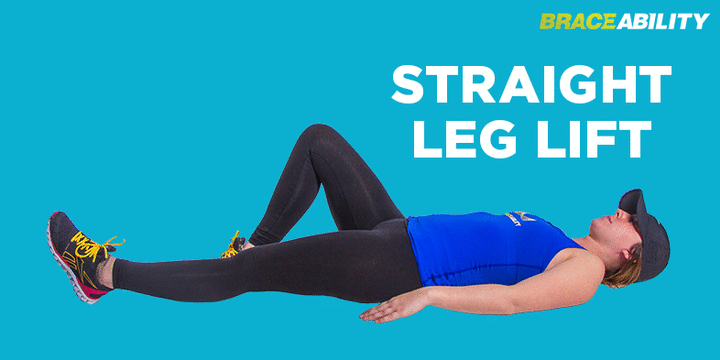
Wall Slide
- Begin by standing with your heels about 6 inches away from a wall and your feet about a foot apart. Your back and buttock should be pressed against the wall.
- Slowly slide your hips down the wall until your knees are bent at roughly a 45-degree angle.
- Hold that position for about 5 seconds, and then slowly slide back up to the starting position.
- Repeat this motion 10 to 15 times for 2 to 3 sets.
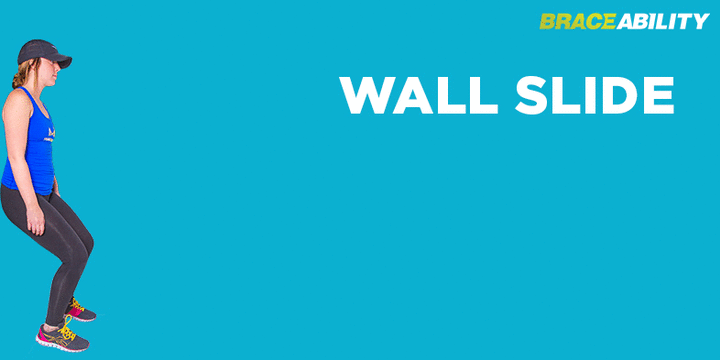
External Hip Rotation (AKA, the Clam)
- Lie on your side with your knees stacked and bent at 90-degree angles and your hips flexed at an angle of about 60-degrees.
- Keeping your heels stacked together and your pelvis anchored and perpendicular to the ground, lift your top knee as high as you can, hold for a second or 2 then lower it.
- Repeat this patellofemoral pain syndrome exercise 10 to 15 times per side for 2 or 3 sets.

3 Patellofemoral Pain Syndrome Stretches
Although strengthening your muscles is very important to your knee joint’s health, sometimes strengthening alone is not quite enough. Gently stretching can prevent tight muscles and help prevent patellofemoral pain. Tight muscles around your knees and hips (quadriceps, hamstrings, gastrocnemius, and iliotibial band) could be the reason your knees are so stiff and sore after running, biking, etc.
Iliotibial Band and Buttock Stretch
- Sit down on the floor with 1 leg bent at a 90-degree angle with your foot flat on the floor and your other leg fully extended.
- Twist your trunk to the right and use your left arm to gently “push” your right leg.
- Hold this stretch for 10 to 20 seconds, repeat 5 to 10 times, and switch legs.
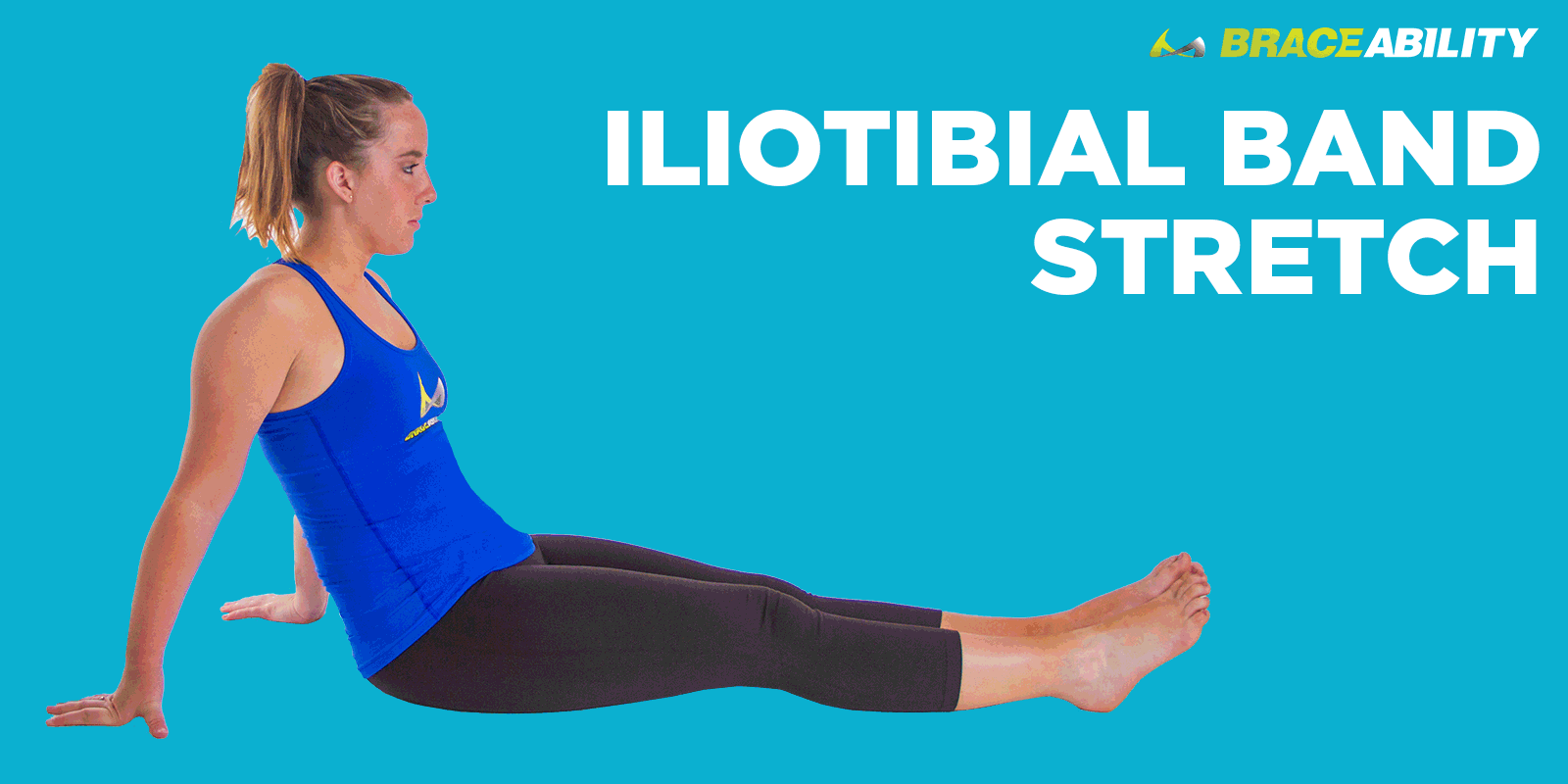
Hamstring Stretch
- Lie on your back with 1 leg fully extended.
- With your other leg, wrap your hands around your thigh and slowly straighten your knee until you feel a good stretch in the back of your thigh.
- Try getting the bottom of your foot to face the ceiling.
- Hold this stretch for 20 seconds, repeat 3 times, and switch legs.
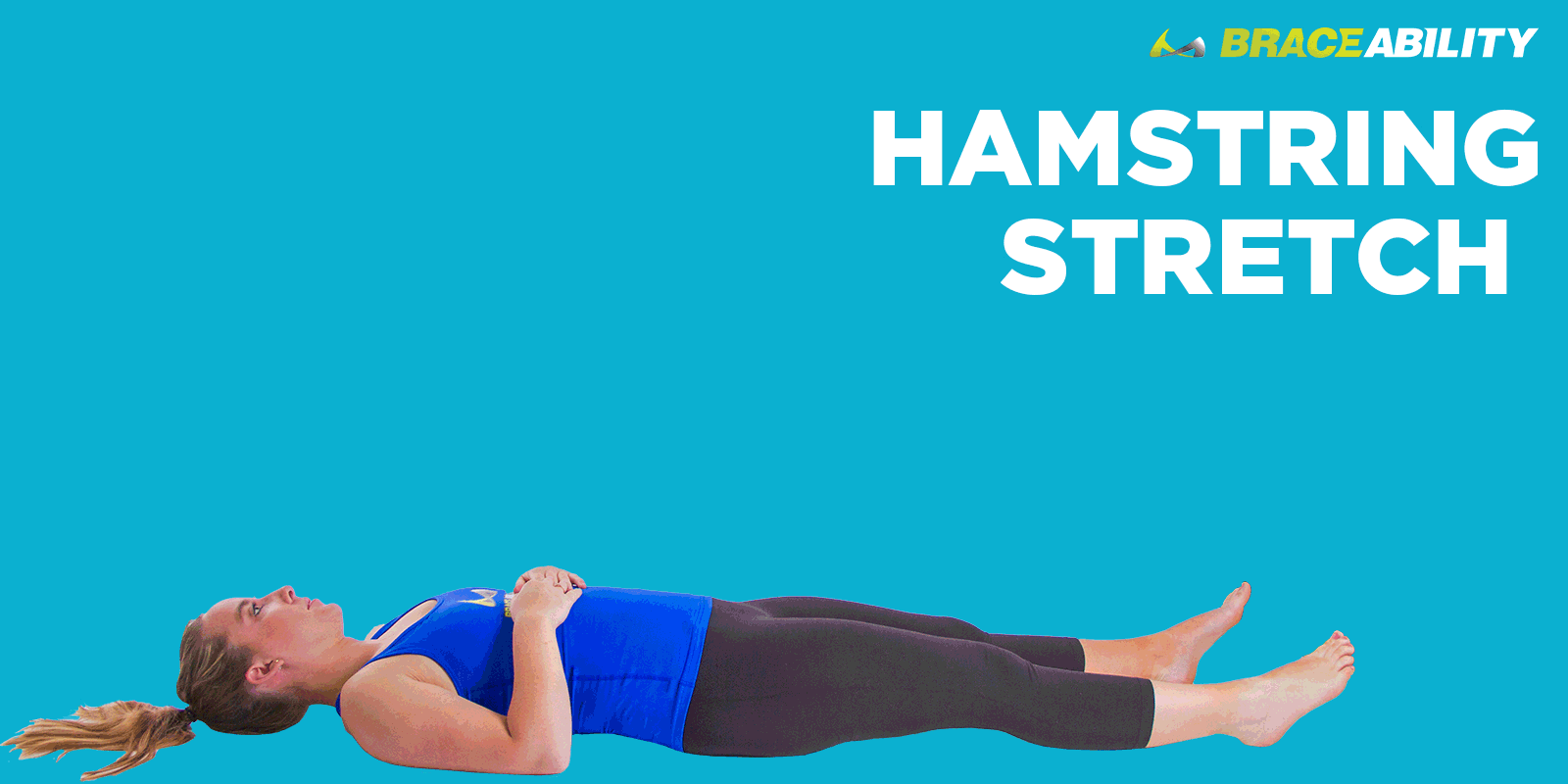
If you lack flexibility, don't worry. Try out The Original Stretch Out Strap. It's a top choice among physical therapists and athletic trainers. Perfect for this particular stretch.
Calf Stretch
- Face the wall, standing about 2 feet away and place your hands against the wall.
- Step forward with 1 foot and keep that knee bent slightly.
- Keep both heels on the ground, while leaning your hips towards the wall.
- Keep your back leg straight to stretch your calf muscle.
- Hold this stretch for 20 seconds, repeat 3 times, and switch legs.
Top 3 Patellofemoral Exercises to Avoid
Although exercise therapy can be one of the best treatments for patellofemoral pain syndrome, be careful because some exercises can do more harm than good for your knees! Remember: Exercise should never cause pain, possibly discomfort but never pain. If you experience sudden, sharp, or shooting pain in your knee joint, please stop and consult with your doctor or physical therapist.
These 3 exercises should be avoided if you have patellofemoral pain:
- Deep squats
- Leg Extension Machine
- Lunges
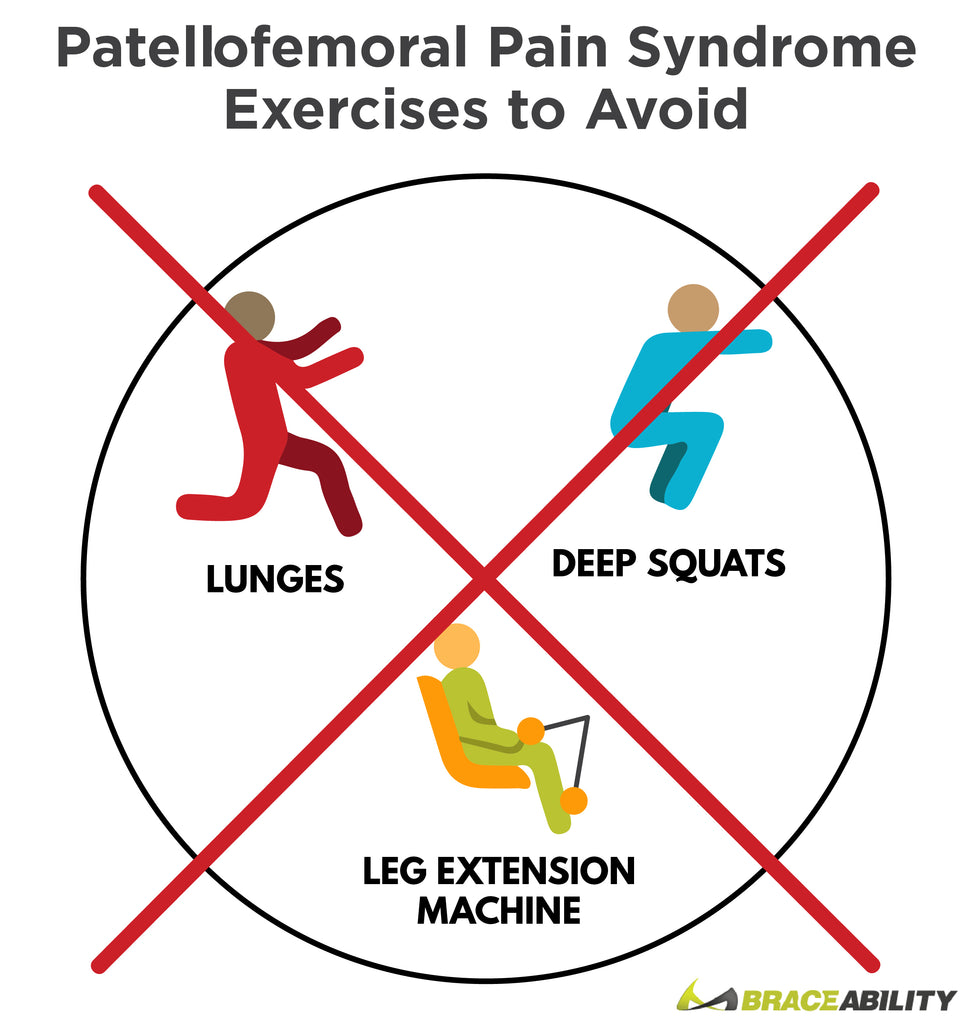
Whether you are totally laid-back or a seasoned athlete, knowing how to protect your knees from damaging exercises can mean the difference between living a long, mobile life or being bedridden in the future. Exercise can lead you to rehabilitation but make sure to avoid knee dysfunction and disorders by avoiding the activities mentioned in this post.
Other activities that could worsen your patellofemoral pain include:
- Any exercise that involves kneeling on your knees directly (However, this brace can help if you are unable to avoid kneeling)
- Running (Especially hills)
- The leg press machine
- Volleyball
- Basketball
- Any stair stepper machine
- Soccer
Overall, gentle exercises are best. In addition to your strengthening and stretching routine, consider trying out some knee-friendly cardio as well. Many people with patellofemoral pain syndrome love elliptical machines, swimming, and water aerobics. Each of these activities places very little stress on your knees, while still providing a good burn!













